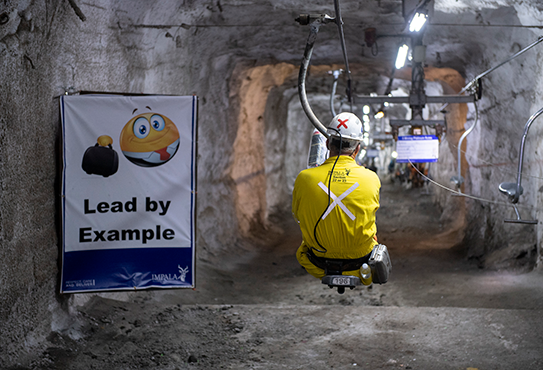
Living the Implats Way
Our purpose is to create a better future to improve the lives of future generations. We accomplish this through the metals we produce, the way we do business and through our superior performance.
Read moreOur stakeholders are increasingly interested in the impacts and contribution of our materials and the products manufactured from them. Linked to the circular economy aimed at reducing global resource use, there is an increasing role for PGM recycling to materially impact markets.
The benefits of PGM mining for the environment and society were illustrated in the lifecycle assessment (LCA) on the impacts and benefits of PGMs completed in 2014 by the International Platinum Group Metals Association (IPA), to which Implats is affiliated. This study was important in highlighting that the high recyclability of PGMs and their role in society significantly mitigate the environmental impacts of PGM primary production.
PGMs are highly resistant to wear, tarnish, chemical attack and high temperature, and have outstanding catalytic and electrical properties. All these unique characteristics have made them indispensable in many industrial applications.
By far the largest use of PGMs today is for automobile catalytic converters (autocatalysts), a pollution-control device fitted to cars, trucks, motorcycles and non-road engines. In this application, PGMs are coated onto a substrate housed in the exhaust system, where they act as catalysts to reduce levels of harmful emissions to legislated levels. PGMs enable car manufacturers to comply with emissions standards and help regulators to implement tightening emissions regulations.
Extracting and refining PGMs is a capital-, energy- and labour-intensive process. PGMs are produced in low volumes and are used in small quantities. The high and repeatable recyclability of PGMs means that the environmental burden of PGM production decreases with each recycling round.
Power consumption during mining and ore beneficiation has been identified as the major impact (72%) of the production of PGMs on the environment; a further 27% of the impact comes from smelting and refining. Only 1% of impacts are attributed to recycling. The low footprint of recycling compensates for the higher footprint of primary production.
The LCA illustrated that even though the impacts of PGM production appear to be high from a lifecycle perspective, these impacts are significantly mitigated by the in-use benefits, as indicated in the following findings:
The findings of the LCA study have been valuable in assisting companies to make informed business decisions about process improvements, as well as new projects and design of new facilities. An update to the 2014 LCA study was initiated in 2019. The results of the study will be published in 2020.